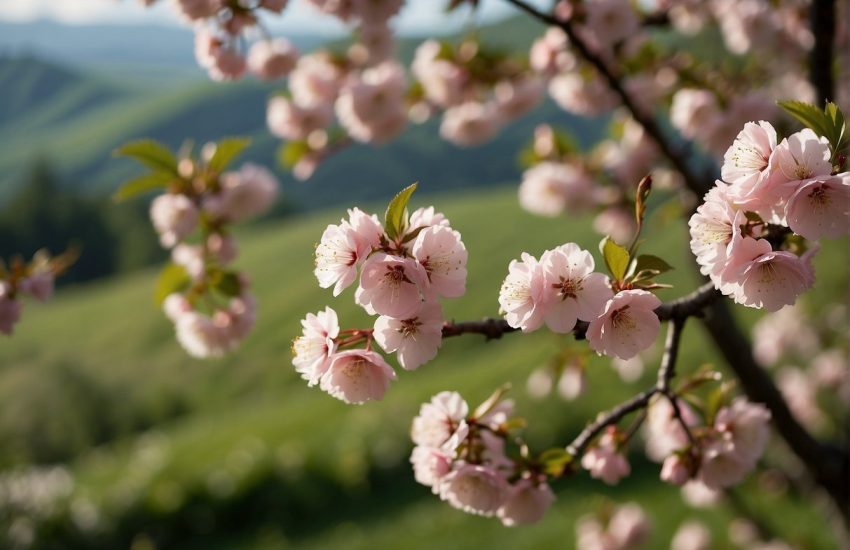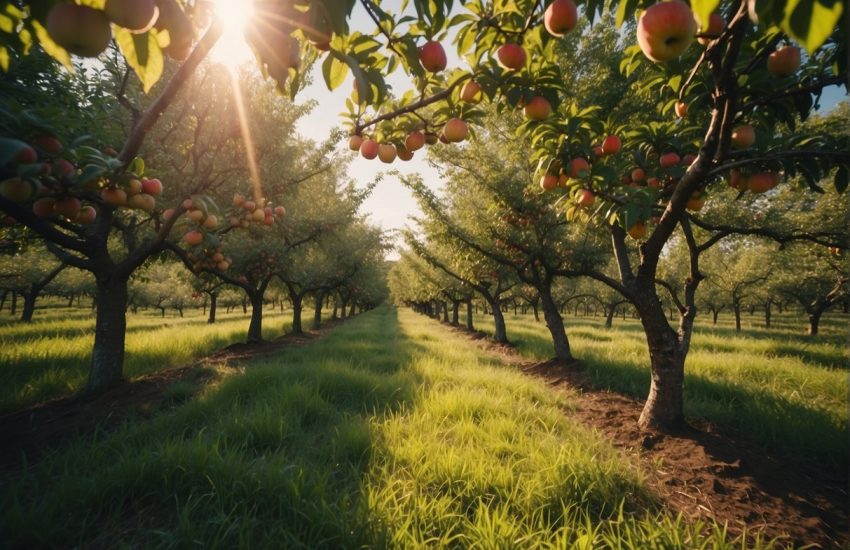Fruit Trees in New Mexico: A Guide to Growing and Harvesting Fresh Fruits in the Southwest
New Mexico is a state known for its arid climate and unique landscape. Despite the challenges presented by the dry climate, fruit trees can still thrive in certain areas of the state. In fact, New Mexico is home to a variety of fruit trees that produce delicious and nutritious fruits.

One factor that contributes to the success of fruit trees in New Mexico is the state’s diverse microclimates. From the high altitude regions in the north to the desert regions in the south, there are a variety of environments that can support different types of fruit trees. Additionally, many fruit trees are well-suited to the hot, dry climate and can produce high-quality fruit with minimal water.
Overall, fruit trees in New Mexico offer a unique opportunity for residents to grow their own fresh, healthy fruit. With the right knowledge and care, fruit trees can thrive in this challenging environment and provide a tasty addition to any backyard or orchard.
Climatic Considerations for New Mexico Fruit Trees

Understanding New Mexico’s Climate
New Mexico’s climate is arid and semi-arid, with hot summers and cold winters. The state’s unique topography, with its mountains and valleys, greatly affects its climate. The southern part of the state is generally warmer than the northern part, and the higher elevations experience colder temperatures.
Hardiness Zones and Temperature Extremes
New Mexico is divided into USDA hardiness zones 4 through 8, with zone 4 being the coldest. The state experiences temperature extremes, with some areas reaching temperatures as low as -30°F in the winter and as high as 110°F in the summer. It is important to choose fruit tree varieties that are appropriate for the specific hardiness zone and microclimate in which they will be planted.
Dealing with Late Spring Frosts
Late spring frosts can be a challenge for fruit tree growers in New Mexico. These frosts can damage or kill blossoms, which can greatly reduce fruit yields. To minimize the risk of frost damage, it is recommended to plant fruit trees on the south-facing slopes of hills or mountains, where they can receive more sunlight and warmer temperatures. Additionally, covering the trees with blankets or tarps during frost events can provide some protection.
In conclusion, understanding New Mexico’s climate and its unique challenges is crucial for successful fruit tree cultivation. By selecting appropriate varieties and taking measures to protect against late spring frosts, growers can increase their chances of a bountiful harvest.
Selecting and Cultivating Fruit Trees
When it comes to selecting and cultivating fruit trees in New Mexico, there are several factors to consider. From soil type to water requirements, choosing the right tree and properly caring for it can make all the difference in the success of your orchard.
Best Fruit Trees for New Mexico Soils
New Mexico’s soils can vary greatly, from sandy to clay to rocky. It’s important to choose fruit trees that are well-suited to the specific soil type in your area. Peach trees, for example, tend to do well in sandy soils, while apple and pear trees prefer well-draining soils with plenty of organic matter. Apricot, cherry, and plum trees can thrive in a variety of soil types, but they all require good drainage to prevent root rot.
Planting and Water Requirements
When planting fruit trees in New Mexico, it’s important to consider the water requirements of each tree. Most fruit trees require regular watering, especially during the hot, dry summer months. However, it’s important not to overwater, as this can lead to root rot and other issues. In general, fruit trees should be watered deeply once or twice a week, depending on the weather and soil type.
Pruning and Disease Management
Proper pruning is essential for maintaining healthy fruit trees and maximizing fruit production. Fruit trees should be pruned in the late winter or early spring, before new growth appears. This helps to promote healthy growth and prevent the spread of disease. In addition to pruning, it’s important to keep an eye out for common fruit tree diseases, such as fire blight and powdery mildew, and take steps to prevent and manage them.
Harvesting and Maximizing Fruit Production
Harvesting fruit at the right time is key to maximizing fruit production and quality. Different fruit trees have different ripening times, so it’s important to be familiar with the specific needs of each tree. In addition to timing, proper fertilization and pest management can also help to maximize fruit production and quality. Using organic fertilizers and pest-resistant varieties can help to reduce the need for chemical treatments and promote a healthy, sustainable orchard.


